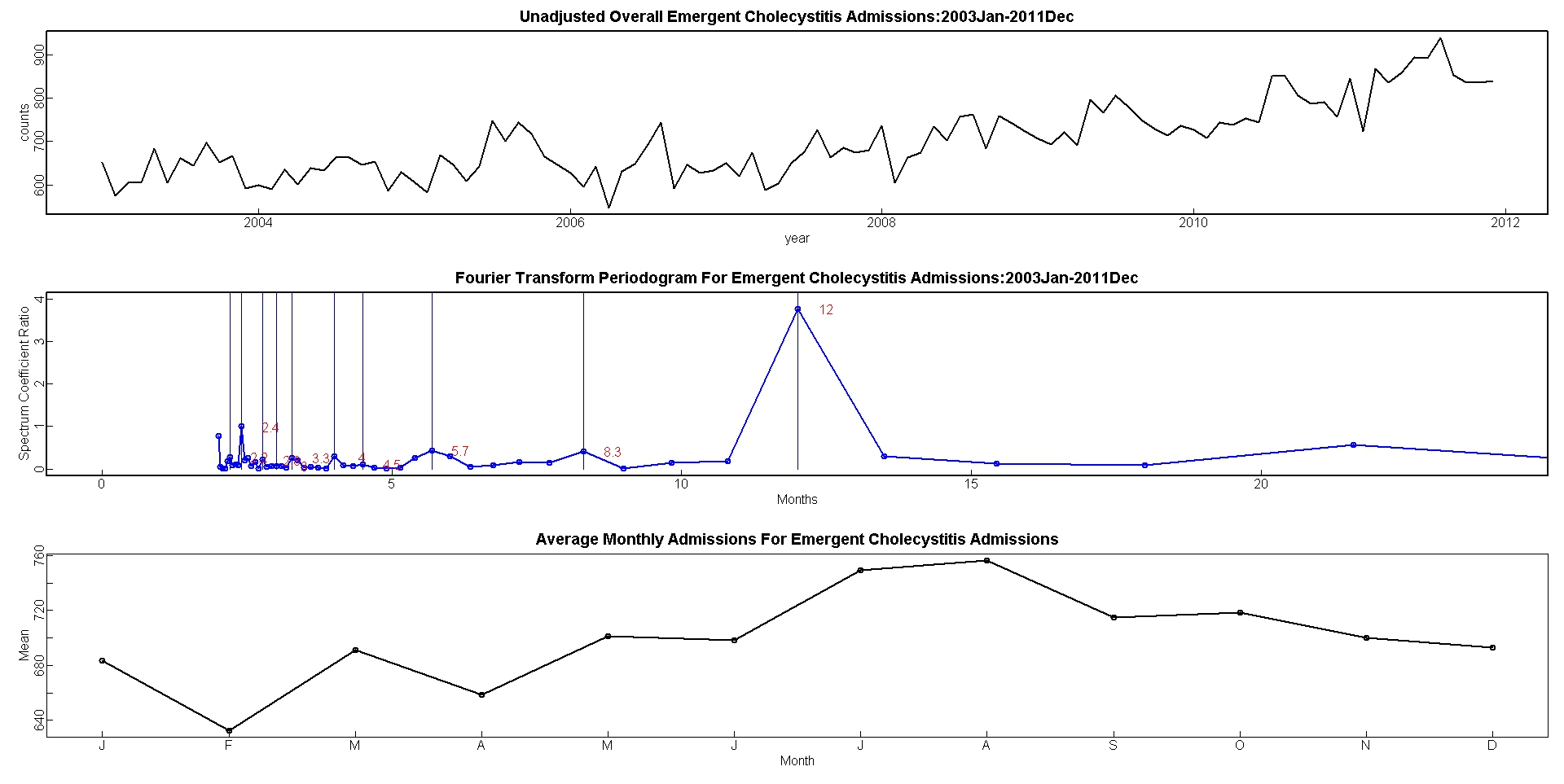Z. Fong1, D. B. López1, R. La Placa2, G. Jin1, K. D. Lillemoe1, D. C. Chang1 1Massachusetts General Hospital,Surgery,Boston, MA, USA 2Massachusetts Institute Of Technology,Department Of Physics,Cambridge, MA, USA
Introduction:
Seasonal variation has previously been demonstrated in multiple facets of surgery, such as acute vascular events and diverticulitis, as well as surgical outcomes. We investigated whether seasonal variation exists for acute cholecystitis.
Methods:
The National Inpatient Sample (NIS) database was queried for emergent admissions with a diagnosis of acute cholecystitis from 2003-2011, and aggregated into monthly averages. Fourier analysis of the monthly data was performed to detect periodic patterns in the data, a signal processing technique that is historically employed in areas of physics and engineering, and is a way of expressing a function (in this case, hospital admissions over time) as a sum of sinusoids. Comparison of sinusoid amplitudes (signal versus noise) allowed us to discern dominant cyclical patterns. Our findings were further confirmed with linear regression analysis.
Results:
There were 75,585 patients admitted emergently with a diagnosis of acute cholecystitis. Unadjusted analysis of the data demonstrated a trend towards increasing number of annual cholecystitis admissions. Fourier transform analysis detected a strong signal with cycle length of 12 months (coefficient ratios of 3.78 and 2.88 for unsmoothed and smoothed periodogram respectively). This annual cycle peaked in August (mean of 756.33 admissions), and was lowest in February (mean of 632.67 admissions). Linear regression confirmed that months July – October were associated with higher number of admissions, with the lowest coefficient in February (-50.89, p<0.001) and the highest coefficient in August (72.78, p<0.001) relative to January (figure).
Conclusion:
A seasonal pattern exists in the incidence of acute cholecystitis, with peaks in the Fall. The Fourier Transform technique was able to isolate unique pattern from fluctuating trends over time, and may have important clinical implications as it is extended into intraoperative and intensive care hemodynamic monitoring in the future.

